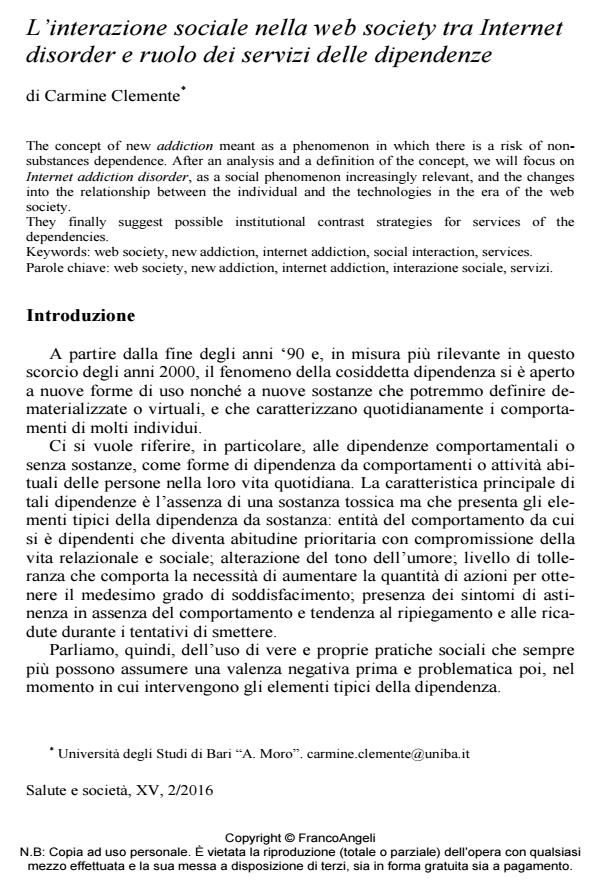L’interazione sociale nella web society tra Internet disorder e ruolo dei servizi delle dipendenze
Titolo Rivista SALUTE E SOCIETÀ
Autori/Curatori Carmine Clemente
Anno di pubblicazione 2016 Fascicolo 2016/2
Lingua Italiano Numero pagine 14 P. 88-101 Dimensione file 786 KB
DOI 10.3280/SES2016-002007
Il DOI è il codice a barre della proprietà intellettuale: per saperne di più
clicca qui
Qui sotto puoi vedere in anteprima la prima pagina di questo articolo.
Se questo articolo ti interessa, lo puoi acquistare (e scaricare in formato pdf) seguendo le facili indicazioni per acquistare il download credit. Acquista Download Credits per scaricare questo Articolo in formato PDF

FrancoAngeli è membro della Publishers International Linking Association, Inc (PILA)associazione indipendente e non profit per facilitare (attraverso i servizi tecnologici implementati da CrossRef.org) l’accesso degli studiosi ai contenuti digitali nelle pubblicazioni professionali e scientifiche
The concept of new addiction meant as a phenomenon in which there is a risk of nonsubstances dependence. After an analysis and a definition of the concept, we will focus on Internet addiction disorder, as a social phenomenon increasingly relevant, and the changes into the relationship between the individual and the technologies in the era of the web society. They finally suggest possible institutional contrast strategies for services of the dependencies.
Parole chiave:Web society, new addiction, internet addiction, interazione sociale, servizi.
Carmine Clemente, L’interazione sociale nella web society tra Internet disorder e ruolo dei servizi delle dipendenze in "SALUTE E SOCIETÀ" 2/2016, pp 88-101, DOI: 10.3280/SES2016-002007